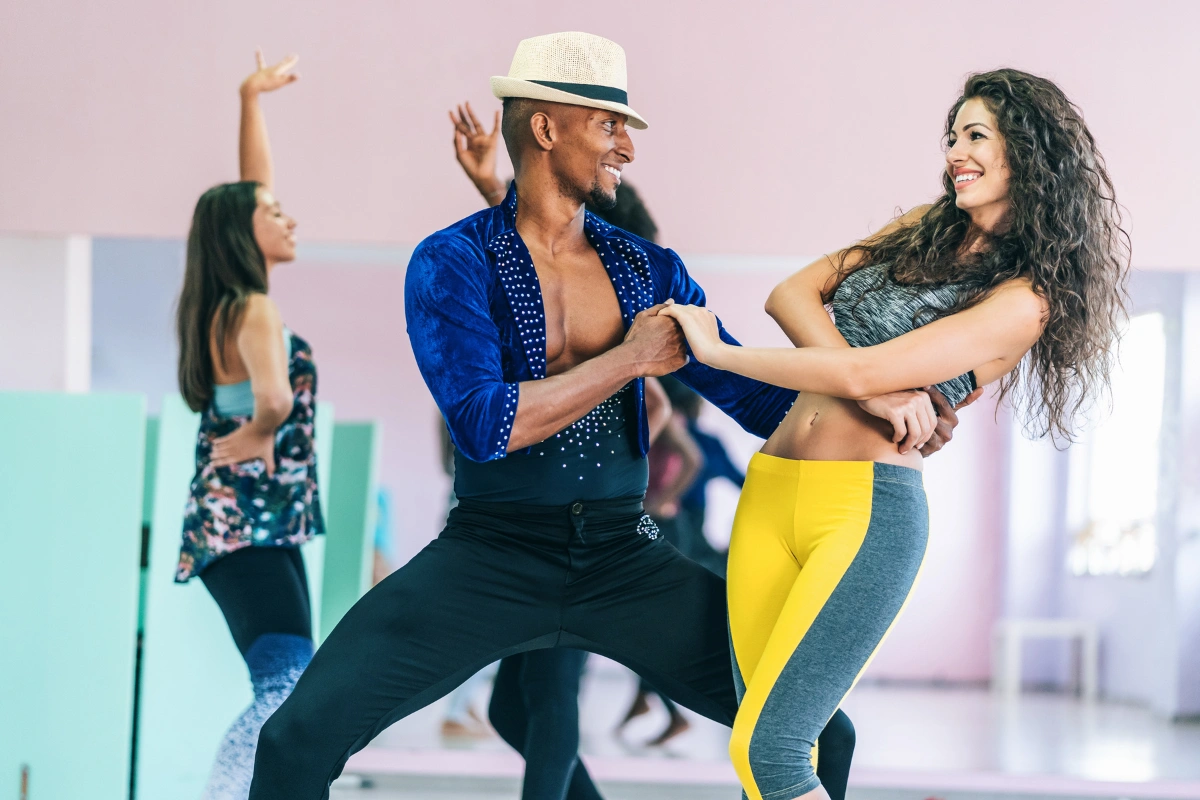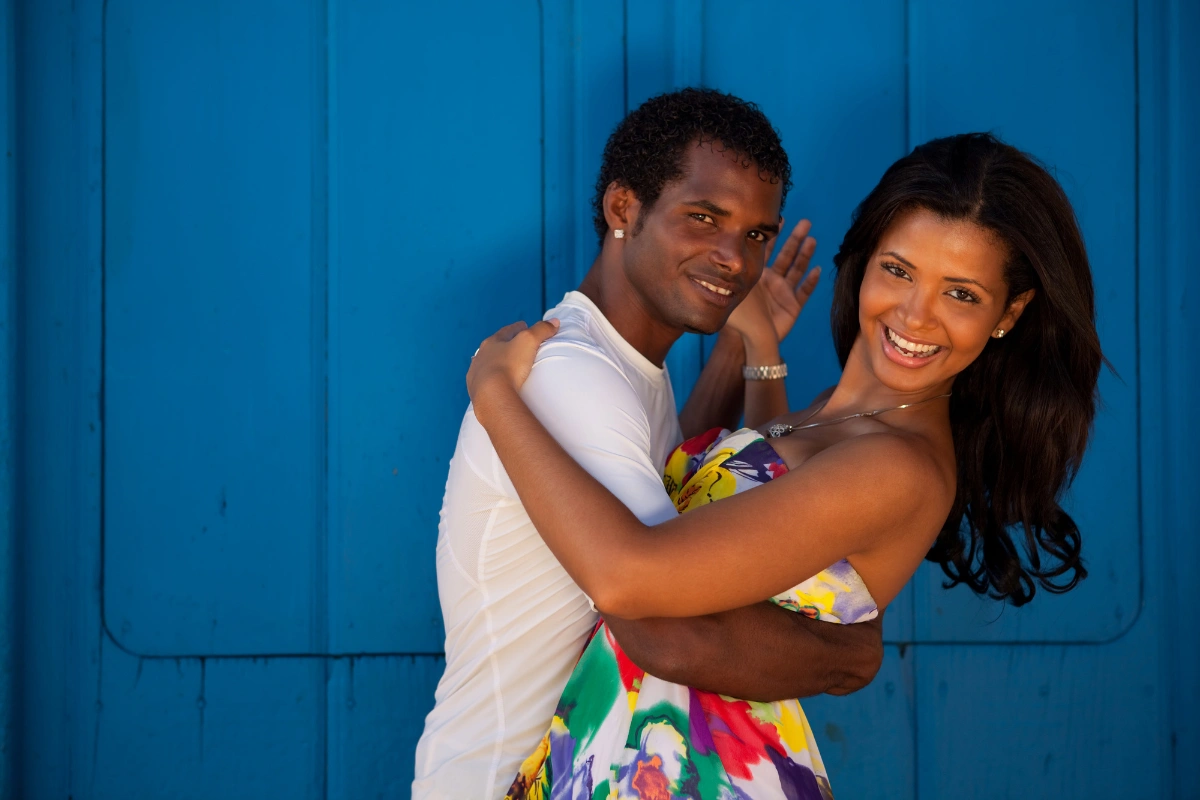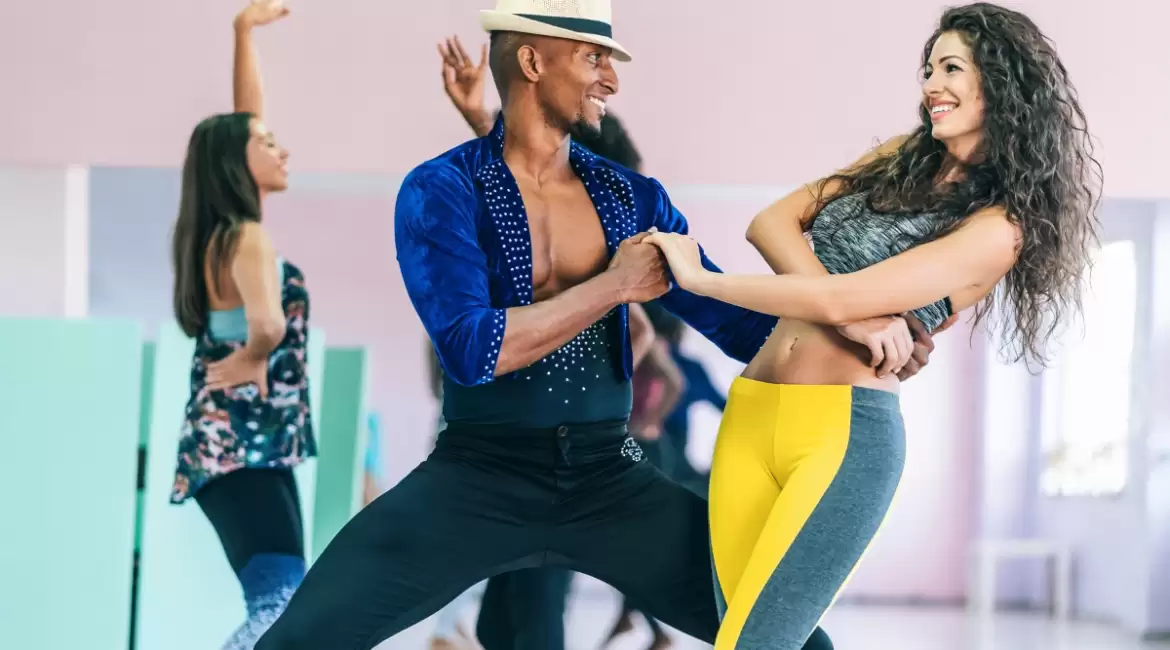Salsa dance, a vibrant and captivating art form, has woven its way into the hearts and souls of people around the globe. Originating from the lively streets of Cuba, salsa has transcended borders and cultures, evolving into a beloved pastime and a dynamic expression of joy, passion, and rhythm. But what exactly is salsa dance? To the uninitiated, it may simply seem like a series of rhythmic movements set to infectious Latin music, but delve deeper, and you’ll discover a rich tapestry of history, culture, and community. In this exploration, we’ll uncover the origins of salsa, its diverse styles and variations, the social significance it holds, and the myriad benefits it brings to individuals and communities alike. Join us on a journey through the pulsating beats, intricate footwork, and sensual movements of salsa dance as we unravel the enchanting tale of this electrifying dance form.
What is Salsa?
Salsa is a type of dance that comes from Cuba and is part of Latin culture. It started in Cuba but has been influenced by dances from other countries too. Normally, people dance salsa with one partner, but there are different kinds of salsa where groups of people can dance together and switch partners. Let’s take a closer look at how this dance form began.

Salsa Dance History
The history of salsa dancing goes back to Cuba around the early 1900s. It was shaped by a mix of cultures from Spain, Africa, and the Caribbean.
Salsa music took inspiration from Spanish tunes and the rhythms of African and Cuban instruments.
As time passed, the dance and music started to catch on in places like the clubs of LA and even reached the streets of Australia. Its popularity grew rapidly.
When did Salsa become popular?
Salsa became popular right from the start, especially when American soldiers went to Cuba for the Spanish-American War. They got hooked on the dance style.
What is Spanish-American War? The Spanish-American War was a conflict that took place in 1898 between Spain and the United States. It was triggered by various factors, including the desire of Cuban nationalists for independence from Spanish colonial rule, as well as American interests in expanding its influence in the Caribbean and Pacific regions. The war began with the sinking of the USS Maine, an American battleship, in Havana harbor, which led to public outrage in the United States.
The conflict lasted only a few months and resulted in significant victories for the United States, particularly in battles such as the Battle of Manila Bay in the Philippines and the Battle of Santiago de Cuba in the Caribbean. The war concluded with the signing of the Treaty of Paris in December 1898, in which Spain ceded control of its remaining colonies, including Cuba, Puerto Rico, Guam, and the Philippines, to the United States. This victory marked the emergence of the United States as a global power and had far-reaching consequences for both countries involved and for the regions affected by colonialism.
Salsa dancers began mixing in moves from American Jazz, and Jazz musicians joined in with Cuban dancers.
Seeing the excitement, club promoters began making records of lively Latin music and sending it to the U.S.

Expansion to the United States
Salsa music found its way into the United States during the 1970s.
As more Caribbean folks moved to the U.S., they brought salsa with them. Locals started picking up the dance, and it became part of the music scene with famous musicians like Willie Colon, Reuben Blades, and Johnny Pacheco.
The Palladium Ballroom in New York City played a big role in salsa’s rise. Located on Broadway, it became a hub for Latino immigrants to showcase their dance skills.
With popular bands like Machito, Arsenio Rodriguez, and Tito Puente, the Palladium became a place where people came together for good times through salsa dancing.
Types of Salsa Dances
New York Style
We’ve talked about how the Palladium ballroom in New York City was a popular spot for Latinos to show off their dance moves, so it’s no surprise that New York developed its own style of salsa.
Influences from U.S. music like R&B and Jazz, as well as other Latino dances such as Mambo, mixed with traditional salsa moves, leading to the creation of new dance steps.
New York-style salsa is known for its precise movements and body isolations. Mastering the footwork in New York Salsa often takes a lot of practice, especially for professional dancers!
Los Angeles (“L.A.”) Style
L.A. Salsa really gets your heart racing fast.
With its fast beats and quick steps, it’s hard not to feel energized when you see it happening on the streets!
This style takes inspiration from Argentine Tango, Latin Hustle, and European Ballroom Dances, creating a dynamic fusion of dance moves.
Miami Style Casino
Miami brings its own flavor to salsa dancing.
Thanks to Cuban immigrants settling in Florida, Miami-style salsa stays true to Cuban roots while evolving over time.
Miami-style salsa is intricate, involving diagonal movements and requiring body flexibility for those twisty, pretzel-like steps. Similar to Cuban Salsa, dancers move in circles.

Colombian/ Cali Style
This type of salsa dancing stands out because of its unique hip and leg movements, as well as its specific back-to-side-to-center patterns. It emphasizes keeping partners’ bodies very close together.
While it’s considered one of the more challenging styles of salsa, there’s a certain vibe to it that makes learning it a fun experience.
Rueda de Casino
Rueda de Casino is like a big, lively celebration.
It involves hundreds of dancers, starting with partners dancing in a circle while someone in the middle directs when to switch partners.
This style is a hit at weddings and other celebrations, adding to the fun and romance. But mastering it can be tough because there’s a lot of pressure to keep the circle going without any hiccups!
Ballroom Salsa
Ballroom Salsa is known for its graceful and stylish moves.
It gained popularity in recent years, typically danced by at least two partners, like many other ballroom dances.
Professional dancers often perform Ballroom Salsa, showcasing their mastery of various salsa styles and ballroom techniques.
Cuban Style Salsa
Cuban Style Salsa has a special romantic vibe!
Danced in a circle, where the guy usually takes the lead with a push and pull motion, this dance is full of energy. Participants need to be lively and flexible to hit the beats right and move smoothly with the push and pull motions.
The Benefits of Salsa Dancing
Apart from looking amazing while dancing, Salsa is suitable for everyone, no matter your age or skill level.
Even if you’re not sure how to move your arms or legs, you can still join in with Salsa.
Salsa brings people together
Salsa is just too lively to make anyone feel left out.
When you go to a Salsa club or party, you’re practically guaranteed to meet new people, share laughs, and even learn something about yourself.
As one of the most popular activities in Latin America, you’ll notice that nobody feels awkward — everyone’s just enjoying the vibe together.
So, whether you’re feeling shy, going through a tough time, or simply want a confidence boost, Salsa can help with that all the way.

Salsa is for fitness Is Salsa good for workouts?
Salsa doesn’t just offer social fun; it also brings health benefits. When you groove to the beat on the dance floor, you’re getting a workout similar to aerobic exercise.
Here are some fitness perks you can enjoy with Salsa Dancing:
- Burning over 420 calories per hour. That’s even more than biking or swimming!
- Salsa can reduce stress significantly.
- It boosts endurance and stamina because of its fast-paced moves.
Summary
Salsa dance, born from the vibrant streets of Cuba, has evolved into a beloved global phenomenon. It encompasses a rich tapestry of history, culture, and community, bringing people together through its infectious rhythms and dynamic movements. Salsa’s origins trace back to the fusion of diverse cultural influences, including Spanish melodies, African rhythms, and Caribbean dances. As it spread beyond its Cuban roots, salsa underwent various transformations, giving rise to distinct styles such as New York, Los Angeles, Colombian, and Miami-style casino salsa. Each style carries its own unique flair, from the elegant ballroom salsa to the energetic Colombian/Cali style and the communal Rueda de Casino.
Beyond its aesthetic appeal, salsa holds social significance as a unifying force that breaks down barriers and fosters connections among people of all ages and backgrounds. Whether at salsa clubs, parties, or festivals, participants come together to share in the joy of movement and music, forging bonds that transcend cultural boundaries.
Moreover, salsa offers a myriad of health benefits, serving as an effective form of exercise that promotes cardiovascular fitness, stress relief, and improved endurance. Its fast-paced footwork and rhythmic patterns challenge both body and mind, making it a fun and engaging way to stay fit.
In summary, salsa dance embodies the spirit of celebration, community, and self-expression. From its humble beginnings in Cuba to its global popularity today, salsa continues to captivate hearts and inspire individuals to embrace the joy of movement, rhythm, and connection.


Leave a reply